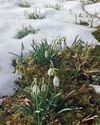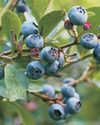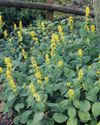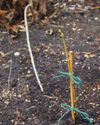
ONE OF THE FIRST signs that green and flowering life will actually return to the temperate areas of the world after the depths of winter is the emergence of clumps of the cheerful little snowdrop.
When I return from a Florida winter stay, I am greeted by large, luminous patches on my lawn of what truly looks like remnants of receding drifts of snow. While I'm away, neighbors who walk by my house keep me informed of their progress, often sending me pictures of the first dabs of white that have peeked out even in the middle of a cold Rhode Island February.
It is generally known by my acquaintances that they may have as many snowdrop bulbs-about the size of string bean seeds-as they need. Over the decades I have taken pleasure in seeing spreads of snowdrops that originated from my yard in many other locations around town.
SHARE AND SHARE ALIKE
My own first snowdrops were a gift given to me by a young teacher of biology at the school where we both taught. As I recall, that first batch of flowers came crammed into a paper cup. I separated the bulbs, planted them with a bit of bone meal and let nature take its course. Before long I had a decent display of these harbingers of spring! That teacher, young Thom Collins, moved on to the wilds of Vermont, but the snowdrops continued to link us together; I sent him photos from time to time showing how his thoughtful green-and-white handful of cheer had progressed.
This year, Thom unexpectedly informed me that he had married a galanthophile-the proper name of a lover of the at least 20 or so species of the Galanthus genus. The name of the genus is derived from the Greek gala (milk) and anthos (flower).
Bu hikaye Horticulture dergisinin September - October 2024 sayısından alınmıştır.
Start your 7-day Magzter GOLD free trial to access thousands of curated premium stories, and 9,000+ magazines and newspapers.
Already a subscriber ? Giriş Yap
Bu hikaye Horticulture dergisinin September - October 2024 sayısından alınmıştır.
Start your 7-day Magzter GOLD free trial to access thousands of curated premium stories, and 9,000+ magazines and newspapers.
Already a subscriber? Giriş Yap

GAGA FOR GALANTHUS
As easy as they are irresistible, snowdrops boast a devoted and growing following

NEW PLANTS
Multiseason Marvels

BLUEBERRIES & CO.
Members of the genus Vaccinium provide sweet flavor, health benefits and beauty in the garden

AN ECOLOGICAL AGREEMENT
How three great minds think alike

Take It Indoors
Cs the growing season dwindles, _ potted cittus became a summer souuenir

ROOTED IN PLACE
LAYERING IS A PROPAGATION TECHNIQUE THAT TAKES A WHILE TO COMPLETE, BUT IT DEMANDS LITTLE EFFORT FROM THE GARDENER

AT HOME WITH PLANTS
Business travel and pleasure trips helped inspire this Cincinnati garden

THE GARDEN GOES DARK
Yes, gardens have their dark side. But-surprise! A garden's darkness can be good, not sinister.

LOW-WATER WONDERS
EXPLORE ONE PLANTSMAN'S DROUGHT-TOLERANT FAVORITES FOR EACH LEVEL OF THE GARDEN

Succeed With Succession- The best crops to plant throughout summer, plus how to time them right
The best crops to plant throughout summer, plus how to time them right. Once a crop like spring turnips or snap peas has finished, I tidy up the bed, amend the soil with a thin layer of compost and replant. Depending on the new crop, I may be sowing seeds or transplanting seedlings.